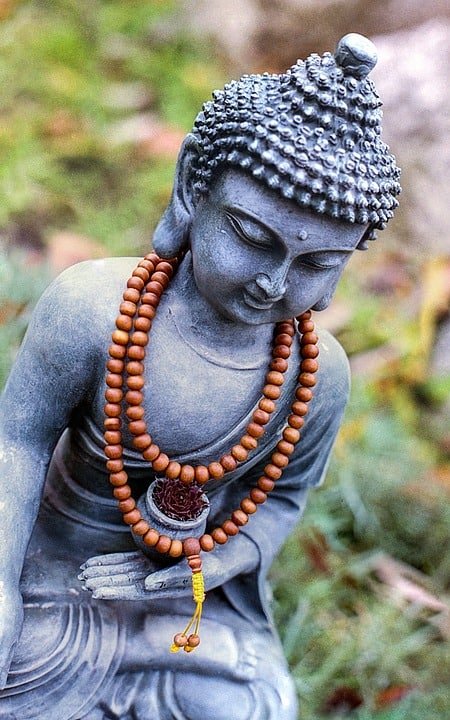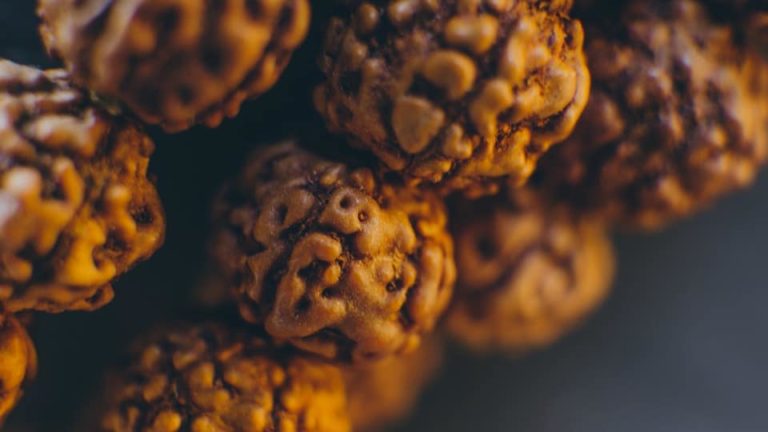
Mala beads, ‘yoga beads’ and other jewellery related to yoga practice have surged in popularity in the last few years. Here’s our basic guide to unlock the mystery of their historical and religious meanings. You can take a look beyond the pretty strings of beads to see their origins, and understand why they’re associated with yoga.
So what are Malas? Prayer beads are used in many different religions throughout the world. They’re an aid for prayers and meditations and a symbolic item to wear to feel connected to one’s faith. Not all prayer beads have the same number or type of beads. They can me made of numerous different materials like seeds, gemstones and wood. Many you see on the market now are a fusion of new age crystal healing and traditional Mala.
We’ll be focusing on Malas from Hinduism (Japamala) and Buddhism. These are the most common types of Malas used in the yoga world. You will have likely come across them!
The Buddhist and Hindu Mala – Japa Mala

In Hinduism Mala beads are used when reciting mantras or focusing on the name of a specific deity. For some Hindus the material used is significant. For example, worshippers of Vishnu (Vaishnavites) use Tulsi wood, a type of Holy Basil. Rudraksha beads are associated with Lord Shiva and used by Shaivas. The 108 beads are counted through while repeating prayers or mantras. They’re usually turned clockwise by the thumb and held in the right hand as they are counted. This is the same for Buddhism, though deities are not meditated on by Buddhists. However, in Chinese and Japanese Buddhism Malas tend to have less beads, yet are still a divisor of 108. For example, a 27 bead string that is counted through four times.
How You Can Use Them
Having something to focus on during your meditations can be very important for keeping your mind from straying off in different directions. Something tactile to hold engages another of your senses. The regular patterns of movement keep your mantras evenly spoken or thought, reducing even more distraction. Repetition calms and centers us – there’s a reason yoga is in sequences! You can also use them just because they look beautiful and you like beautiful things, of course!
For more meditation, yoga and lifestyle tips and information, as well as exclusive offers, follow us on Facebook. Or check out our Instagram at @yogamasti.
Yogamasti
